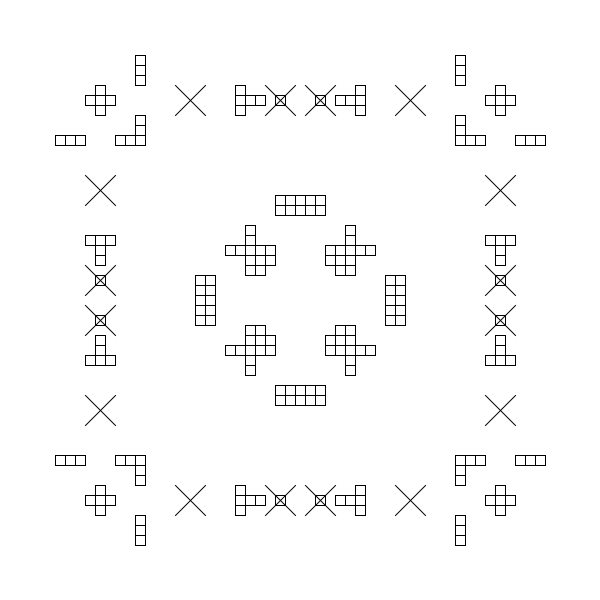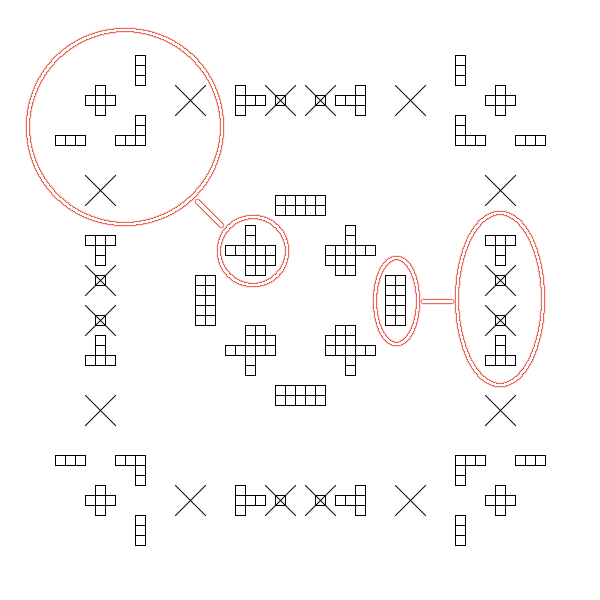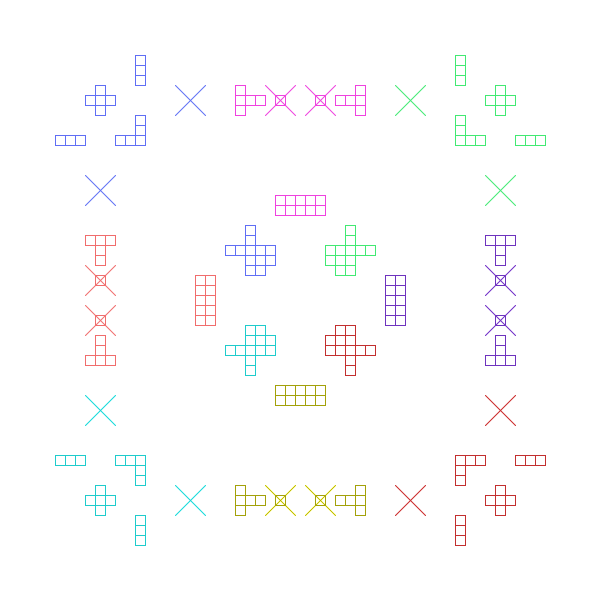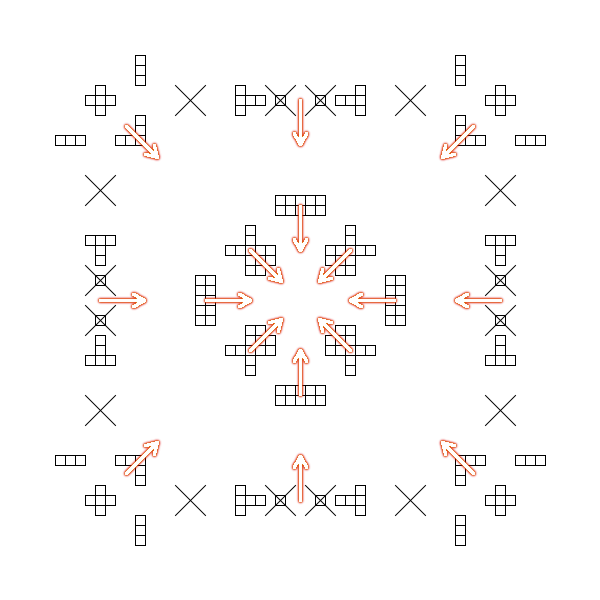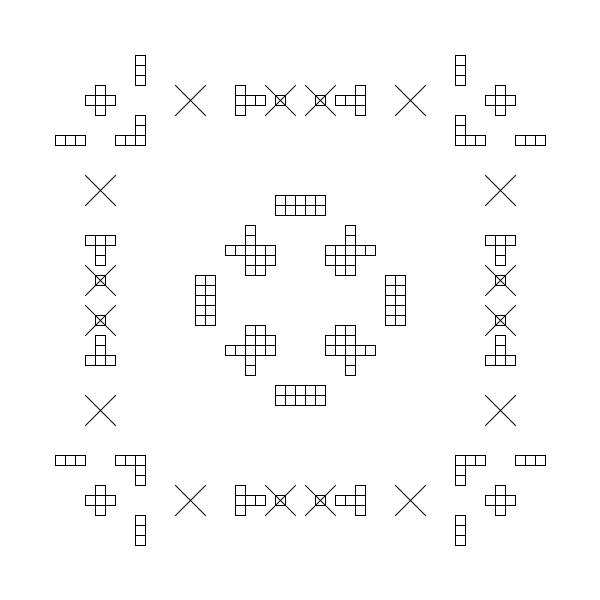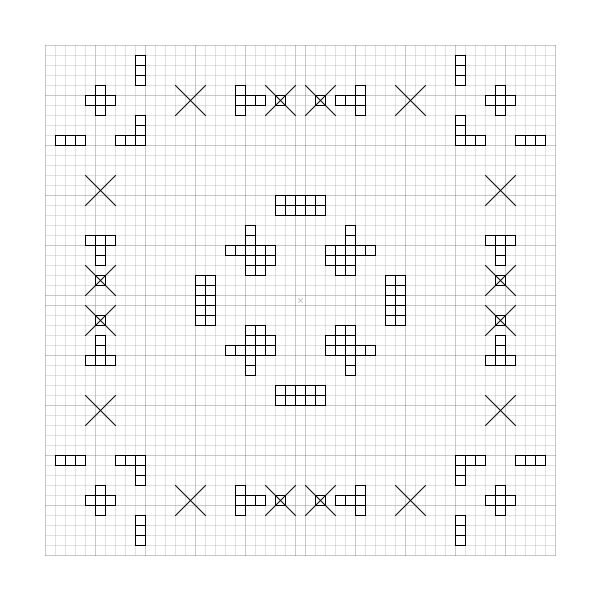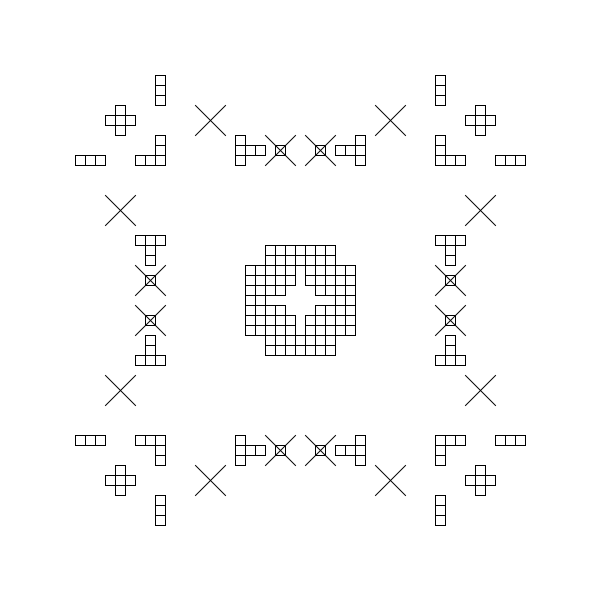After performing the rotations and checking the layout at the control phase, we may be a bit lost about what to do next, what the next step should be in solving the code. The pattern seems to be finished now, and no rotation or reflection could make it even more complete. Nonetheless, we feel, that the process must go further somehow, that there must still be operations left to perform. But how to find them?
Before possibly getting desperate, let's take a fresh look at the control phase pattern, and try to understand, what we are observing:
The picture is clearly divided into an inner and an outer part (as we have already recognized it in the previous step). Considering the message we are searching for (the location of the other solar system), it also seems to be obvious, that the outer part plays the more important role, since both the Sun and the star symbols are placed there. But then what purpose does the inner part serve for, what could be its function in the solution?
Let's think... We must perform some operations on the items of the outer edge, that seems evident... Isn't it possible, that the inner elements are there to instruct us, what operations to execute? That they could be the guides helping us to find the next necessary move? That maybe we should link the outer and inner shapes to each other, and then carry out the same actions on each outer item, as its corresponding inner counterpart indicates us to do?
Let's verify, whether this idea would be feasible! At this stage we could attach (based on their positions and appearance) the inner and the outer items to each other in the following way (only one link per type is shown):
All the attachments visualized by different colors:
The inner items may suggest us to "push them together", i.e. to move them toward the center. And this would mean, of course, that we should move each outer shape as well, in the same direction and by the same distance as the inner shape attached to it:
Let's try, and perform the operation in two phases. First we move the corner elements:
Note: we do not push them together completely, as there must be enough room left for the middle items (coming on the way).
For checking purposes the two motions together with grid turned on:
And the end state after having executed the operation:
It seems that the idea is working so far! With its help we were indeed able to take the solution one step further again. Let's also recognize, how elegantly the designers of the code bring the Sun and star symbols into an offset position to each other! Of course it would have been possible to have this configuration right after the rotations, but then we could not have had the opportunity to check the layout in the control phase. So at first an arrangement with all the elements placed on the same line was created, in order to make the test possible, and then in this step the items are finally moved into their positions. A beautiful piece of work (once again)!
In the next step we will continue applying the idea we have just found, that is, we will perform the very same actions on the outer elements, which the inner elements attached to them indicate us to do.
